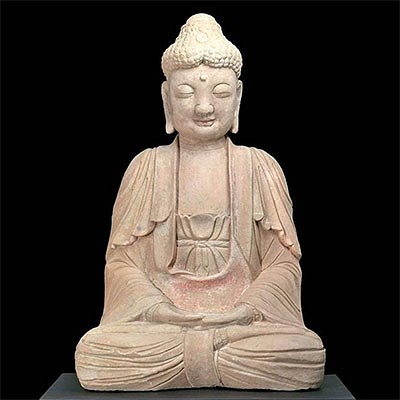Published 10th C. Samanid Pottery Bowl w/ Avians - TL'd
Lot 63
About Seller
Artemis Gallery
686 S Taylor Ave, Ste 106
Louisville, CO 80027
United States
Selling antiquities, ancient and ethnographic art online since 1993, Artemis Gallery specializes in Classical Antiquities (Egyptian, Greek, Roman, Near Eastern), Asian, Pre-Columbian, African / Tribal / Oceanographic art. Our extensive inventory includes pottery, stone, metal, wood, glass and textil...Read more
Categories
Estimate:
$9,000 - $12,000
Absentee vs Live bid
Two ways to bid:
- Leave a max absentee bid and the platform will bid on your behalf up to your maximum bid during the live auction.
- Bid live during the auction and your bids will be submitted real-time to the auctioneer.
Bid Increments
| Price | Bid Increment |
|---|---|
| $0 | $25 |
| $300 | $50 |
| $1,000 | $100 |
| $2,000 | $250 |
| $5,000 | $500 |
| $10,000 | $1,000 |
| $20,000 | $2,500 |
| $50,000 | $5,000 |
| $100,000 | $10,000 |
| $200,000 | $20,000 |
About Auction
By Artemis Gallery
Feb 18, 2021
Set Reminder
2021-02-18 10:00:00
2021-02-18 10:00:00
America/New_York
Bidsquare
Bidsquare : Exceptional Antiquities, Asian, Ethnographic
https://www.bidsquare.com/auctions/artemis-gallery/exceptional-antiquities-asian-ethnographic-6373
Museum-worthy examples of Egyptian, Greek, Roman, Etruscan, Near Eastern, Far East / Asian, Pre-Columbian, African / Tribal, Oceanic, Native American, Spanish Colonial, Russian, Fossils, Ancient Jewelry, Fine Art, so much more! Artemis Gallery info@artemisgallery.com
Museum-worthy examples of Egyptian, Greek, Roman, Etruscan, Near Eastern, Far East / Asian, Pre-Columbian, African / Tribal, Oceanic, Native American, Spanish Colonial, Russian, Fossils, Ancient Jewelry, Fine Art, so much more! Artemis Gallery info@artemisgallery.com
- Lot Description
Western Asia, Iran / Uzbekistan, Samanid Dynasty, Nishapur or Samarqand, ca. 10th century CE. One of my favorite pieces, this is a gorgeous terracotta bowl with an elegant black-on-white motif of two graceful birds encircling the interior sides. Each bird has two long, gently curving tail feathers. Between them is a simple, interlocking motif, which, combined with the birds, creates an overall sense of unity and the joining of two halves. Size: 8.25" W x 2.5" H (21 cm x 6.4 cm)
Samanid potters invented slip-painted ware, achieving a beautiful clarity of design. See, for example, the perfect lines of the bird's tail feathers. The potters used a white englobe (a thin slip wash) to cover red earthenware and then painted the inscription in a brownish pigment mixed with slip. Adding slip to the pigment prevented it from running.
Published: "Slip Painted ware of Iran", Okayama Museum Exhibition Cat. 1994 pl. 34; "Seven Millennia of Persian Pottery", Tekusui Museum, pl. 47; "The World of Persian Pottery", Pl. 217.
This piece has been tested using thermoluminescence (TL) analysis and has been found to be ancient and of the period stated. A full report will accompany purchase.
Provenance: private California, USA collection, purchased from Malter Galleries; ex-Gluck collection. Published in 1994
All items legal to buy/sell under U.S. Statute covering cultural patrimony Code 2600, CHAPTER 14, and are guaranteed to be as described or your money back.
A Certificate of Authenticity will accompany all winning bids.
We ship worldwide and handle all shipping in-house for your convenience.
#156020Expertly repaired and very lightly restored from multiple large pieces. All pigment is original aside from a few small places on the foot. Motifs are beautifully preserved as shown. Faint rainbow iridescence on surface. Four small collection labels on underside. TL drill samples beneath base and underneath rim.Condition
- Shipping Info
-
All shipping is handled in-house for your convenience. Your invoice from Artemis Gallery will include shipping calculation instructions. If in doubt, please inquire BEFORE bidding for estimated shipping costs for individual items.
-
- Buyer's Premium



 EUR
EUR CAD
CAD AUD
AUD GBP
GBP MXN
MXN HKD
HKD CNY
CNY MYR
MYR SEK
SEK SGD
SGD CHF
CHF THB
THB

















